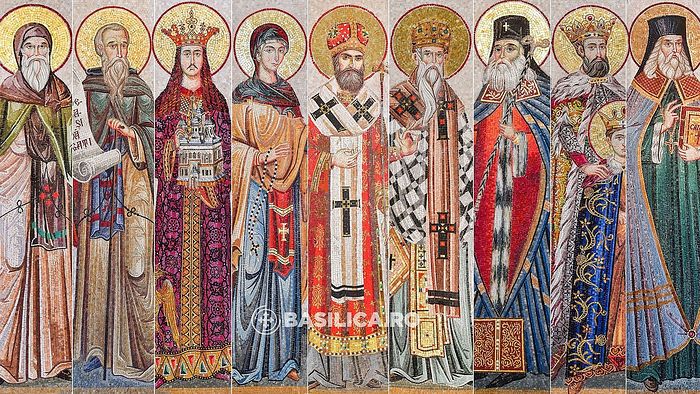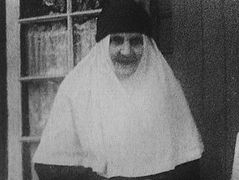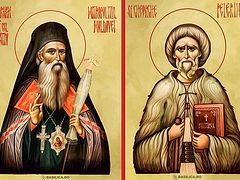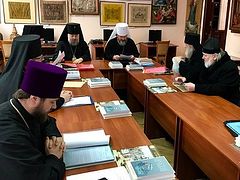Moscow, March 13, 2018
Meeting at Moscow’s Danilovsky Monastery last Wednesday, the Holy Synod of the Russian Orthodox Church resolved to officially add nine Romanian saints to its liturgical calendar, the site of the Moscow Patriarchate reports.
In a letter dated March 24, 2017, His Beatitude Patriarch Daniel of Romania informed His Holiness Patriarch Kirill of Moscow and All Russia about the glorification of a whole host of Romanian saints from 1950 to 2017.
The Holy Synod of the Romanian Church itself had resolved on February 15 to add St. Matrona of Moscow to its liturgical calendar.
In response to Pat. Daniel’s addresses to the Local Churches, the Polish Orthodox Church resolved in May 2017 to add 40 Romanian saints to its calendar.
The Holy Synod of the Russian Church heard a report on Wednesday from His Eminence Metropolitan Hilarion (Alfeyev) of Volokolamsk about several of these Romanian saints:
-
St. Dionysius the Humble (c. 470—537/556): He was born in Scythia, in modern-day Romania. He moved to Rome at the end of the 5th century and translated a number of lives and works of the saints into Latin, as well as collections of Church canons. He also compiled tables for calculating the date of Pascha and introduced the practice of dating from the Nativity of Christ.
-
St. Daniel the Hermit (15th C.): He labored in asceticism in a Bukovina monastery and later settled in a secluded area. Many came to him, including the Moldovan ruler Stefan III. He refused an appointment to the See of Moldova and founded the Voronets Monastery.
-
Right-Believing Prince St. Neagu Basarab (c. 1459-1521): He was the ruler of Wallachia in the first quarter of the 16th century. He was a generous donor for the construction of churches. He left teachings written in Church Slavonic to his son Theodosius.
-
St. Symeon of Transylvania (1st half of 17th C.—1656): He was elected as metropolitan of Transylvania in 1643. He published the first Romanian-language New Testament in 1648, and the book of Psalms in 1651.
-
St. Varlaam of Moldova (end of 16th C.—1657): He fought for the national and religious rights of Romanian Transylvanians and advocated for the enlightenment of and friendship with Russia. He wrote several apologetic works in defense of Orthodoxy. His name is associated with the beginning of the written tradition of the Romanian language.
-
St. Theodora of Sihla (mid-17th C.—early 18th C.): Soon after her marriage, both she and her husband asked for a blessing to enter into monasticism. She was tonsured at Vărzărești Skete and later labored in asceticism in the Sihla forest in the mountains of central Romanian.
-
Martyred Prince St. Constantine Brâncoveanu (1654-1714): He ruled Wallachia beginning in 1688. He was a benefactor of many monasteries and churches and cared for the spiritual enlightenment of his people, and the development of printing. He also sought union with Orthodox Russia. In 1714, he was summoned to Constantinople by the sultan, where he was tortured to death for refusing to convert to Islam. His four sons Constantine, Stephan, Radu, Matthew and his counsellor Ianache were also martyred with him.
-
Hieromartyr Anthimos of Wallachia (1650-1716): He was born in Georgia but was taken into slavery on a return trip from Russia and was bought by Patriarch Dositheus of Jerusalem. He gained fame as a skilled artist and calligrapher. He went to Wallachia at the invitation of St. Constantine Brâncoveanu and was consecrated as a bishop in 1705, later becoming the metropolitan of Wallachia in 1709. He was eventually martyred by Turkish soldiers. He is also canonized by the Georgian Church.
-
St. Callinicus of Cernica, bishop of Râmnic (1787-1868): He was the abbot of the Cernica Monastery near Bucharest, which became the center of printing and social activities in Wallachia. He was distinguished by humility and ascetic virtues. He was consecrated as bishop of Râmnic in 1850 and engaged in church-building and publishing, and opened a seminary. Shortly before his death he retired to the monastery he had founded.
Having heard the metropolitan’s report, the Holy Synod resolved to include the saints in its liturgical calendar, with their feast days being established as:
-
St. Dionysius the Humble: September 1/14
-
St. Daniel the Hermit: December 18/31
-
Prince St. Neagu Basarab: September 26/October 9
-
St. Symeon of Transylvania: April 24/May 7
-
St. Varlaam of Moldova: August 30/September 12
-
St. Theodora of Sihla: August 7/20
-
Prince St. Constantine Brâncoveanu: August 16/29
-
St. Anthimos of Wallachia: September 27/October 10
-
St. Callinicus of Cernica: April 11/24





